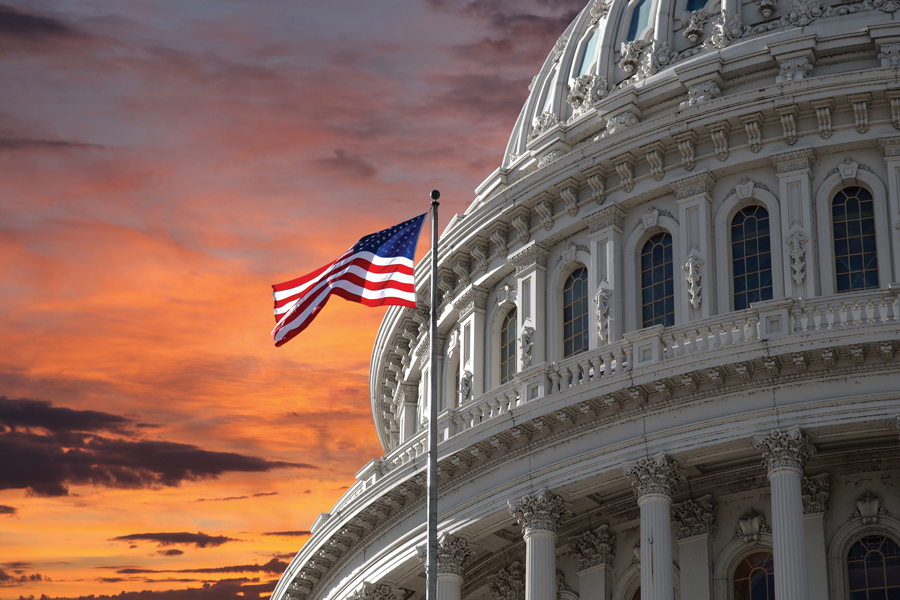

Bipartisan leaders of the House tax-writing committee introduced an expansive retirement savings bill Tuesday that would allow people to save longer and set aside more money for retirement and expand automatic enrollment in company retirement plans.
The 132-page measure, Securing a Strong Retirement Act, contains about three dozen provisions and was written by House Ways and Means Committee Chairman Richard Neal, D-Mass., and the panel’s top-ranking Republican, Rep. Kevin Brady of Texas.
The measure builds on the SECURE Act, which Congress approved late last year. It incorporates a number of retirement savings provisions that have been introduced by other lawmakers and is similar to a Senate bill sponsored by Sens. Rob Portman, R-Ohio, and Benjamin Cardin, D-Md.
The Neal-Brady legislation would raise the age at which participants must begin withdrawing money from retirement plans from 72 to 75 and would exempt lower balances from required distributions. It would increase limits on retirement plan catch-up contributions for people 60 and older. It also would increase a tax credit that encourages low- and middle-income people to save for retirement.
The bill would require automatic enrollment of employees in newly established company retirement plans. It would increase incentives for small businesses to start plans and allow nonprofit organizations to participate in multiple employer plans. It also would allow companies to match a retirement plan contribution with an employee’s student debt payment.
Neal said the bill responds to retirement savings setbacks resulting from the coronavirus pandemic that have added to ongoing retirement security challenges.
“COVID-19 has only exacerbated our nation’s existing retirement crisis, further compromising Americans’ long-term financial security,” Neal said in a statement. “In addition to meeting workers’ and families’ most pressing, immediate needs, we must also take steps to ensure their well-being further down the road.”
The timing of the bill's introduction is odd, coming just days before the election and a little over two months before the end of the congressional session. There’s a chance that parts of the Neal-Brady measure could be included in a government funding bill or other legislation considered during a lame-duck congressional session.
The Insured Retirement Institute, a trade association for the retirement savings sector, plans to launch a lobbying push for the bill, which contains several parts of the five-point policy plan the group has been advocating.
“The measures contained in this bill have the potential to have dramatically beneficial effects on the retirement system,” said Paul Richman, IRI chief government and public affairs officer. “Action is required now, not later, to begin addressing the immediate [retirement savings] problems and longer-term problems.”
If the Neal-Brady bill does not become law before the end of the congressional session late this year, it would have to be reintroduced in 2021. Getting it out now serves as a marker that it will be a House Ways and Means Committee priority next year.
“Chairman Neal and Ranking Member Brady are extraordinary champions for workers saving for retirement,” American Council of Life Insurers Chief Executive Susan Neely said in a statement. “Their proposal reflects many important bipartisan priorities, and we look forward to continuing to work with them to strengthen Americans’ financial footing.”
TIAA also supports the legislation.
“We believe that as Congress works to refine this bill, ultimately it will improve the retirement readiness of Americans and help millions attain a secure financial future,” Chris Spence, TIAA managing director of federal government relations, said in a statement.
The scope of the Neal-Brady bill provides plenty of areas on which to build support. One of the most popular is allowing people to hold onto their retirement savings longer.
“At a time when flexibility is paramount, increasing the RMD age as well as exempting lower account balances from RMDs give retirement savers the option to preserve their savings in tax-advantaged vehicles if they desire to do so,” said Kevin Mechtley, vice president and director of government affairs at the Sammons Financial Group.

Relationships are key to our business but advisors are often slow to engage in specific activities designed to foster them.

Whichever path you go down, act now while you're still in control.

Pro-bitcoin professionals, however, say the cryptocurrency has ushered in change.

“LPL has evolved significantly over the last decade and still wants to scale up,” says one industry executive.

Survey findings from the Nationwide Retirement Institute offers pearls of planning wisdom from 60- to 65-year-olds, as well as insights into concerns.
Streamline your outreach with Aidentified's AI-driven solutions
This season’s market volatility: Positioning for rate relief, income growth and the AI rebound
